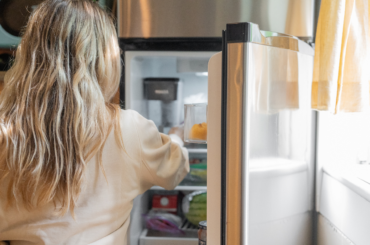Many kids, especially preschoolers, go through an imaginary friends phase. Parents might wonder, or worry about, what that means for their child’s wellbeing and development.
Creating make-believe companions is a common part of pretend play, often starting around the age of three. Experts say that imaginary friends can stay with kids for just a few weeks or up to several years. Most kids outgrow them by age eight or nine.
Here’s a guide to what it means when your kid has an imaginary friend (or 10 of them). Spoiler alert: Having imaginary friends is a great thing, most of the time.
Does having imaginary friends mean a child is lonely?
No, an imaginary friend does not mean there’s anything to worry about socially or emotionally with your child. It’s developmentally normal for young kids to play by themselves and talk to themselves frequently, and that play often involves a lot of make-believe scenarios, including imaginary characters that blur the lines of reality and fiction.
Kids who play with or talk to pretend friends actually tend to be less shy and more outgoing than kids who don’t have them, assures developmental psychologist Marjorie Taylor, Ph.D., who researches the development of imagination and creativity and authored the book Imaginary Companions and the Children Who Create Them.
Why imaginary friends are great for kids’ social and emotional wellbeing
Imaginary friends are not only a positive indicator of a child’s creativity, but they can even help kids’ development in other ways! Here are just some of the benefits of kids having an imaginary pal:
- Gives them an outlet to discuss their emotions or difficult topics
- Helps kids practice language skills and social skills
- Can help kids gain confidence and aid in problem solving
- Encourages the development of empathy and seeing things from another person’s perspective
- Adds more complexity and excitement to their imaginary worlds
- Provides the comfort of always having something they love with them (like a favorite toy or blanket, but they won’t lose it)
As a parent, there can be advantages to your child having an imaginary friend, too. If you lean into imagining with them, it can give you a window into your child’s emotional experiences. For example, if a kid says that their pretend friend doesn’t want to go to school, you can ask that “friend” some open-ended questions until you find out more about why your kid is talking about it. Or, in a bind, this imaginary friend might just be able to convince your kiddo to brush their teeth!
When should parents worry about a child’s imaginary friend?
Most of the time, imaginary companions are simply the sign of an active imagination or a child who likes to get creative with social and emotional situations.
However, in some cases they might be part of a mental health or emotional issue. The American Academy of Pediatrics advises parents to talk to a pediatrician if they notice any of these signs along with an imaginary friend:
- Other developmental concerns, such as speech or social interactions
- Imaginary friends that never leave, or are always “talking”
- Imaginary friends that are causing your child to act violently towards themselves or others
- Sudden changes in your child’s social interactions, hygiene, speech patterns, or concentration
- Family history of mental illness, especially in close relatives
Basically, if you notice anything unsafe, extreme, or inappropriate about your child’s behavior when interacting with their imaginary companion, don’t hesitate to seek out help.
Follow this guideline: “One way to differentiate an imaginary friend from psychosis is that the child should be able to continue functioning well in their environment and relationships even if they have an [imaginary companion],” advised Eleanor Lastrapes, M.D., a child psychiatrist at the University of Oklahoma Health Sciences Center.







